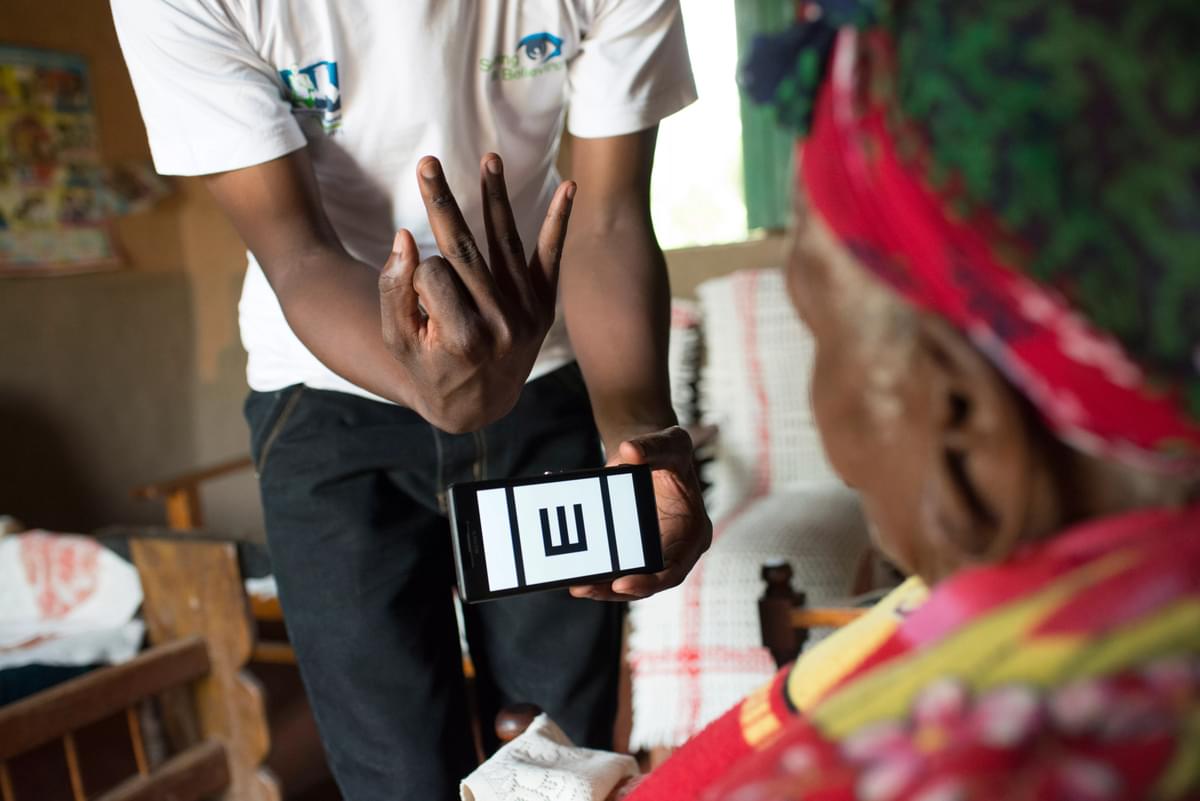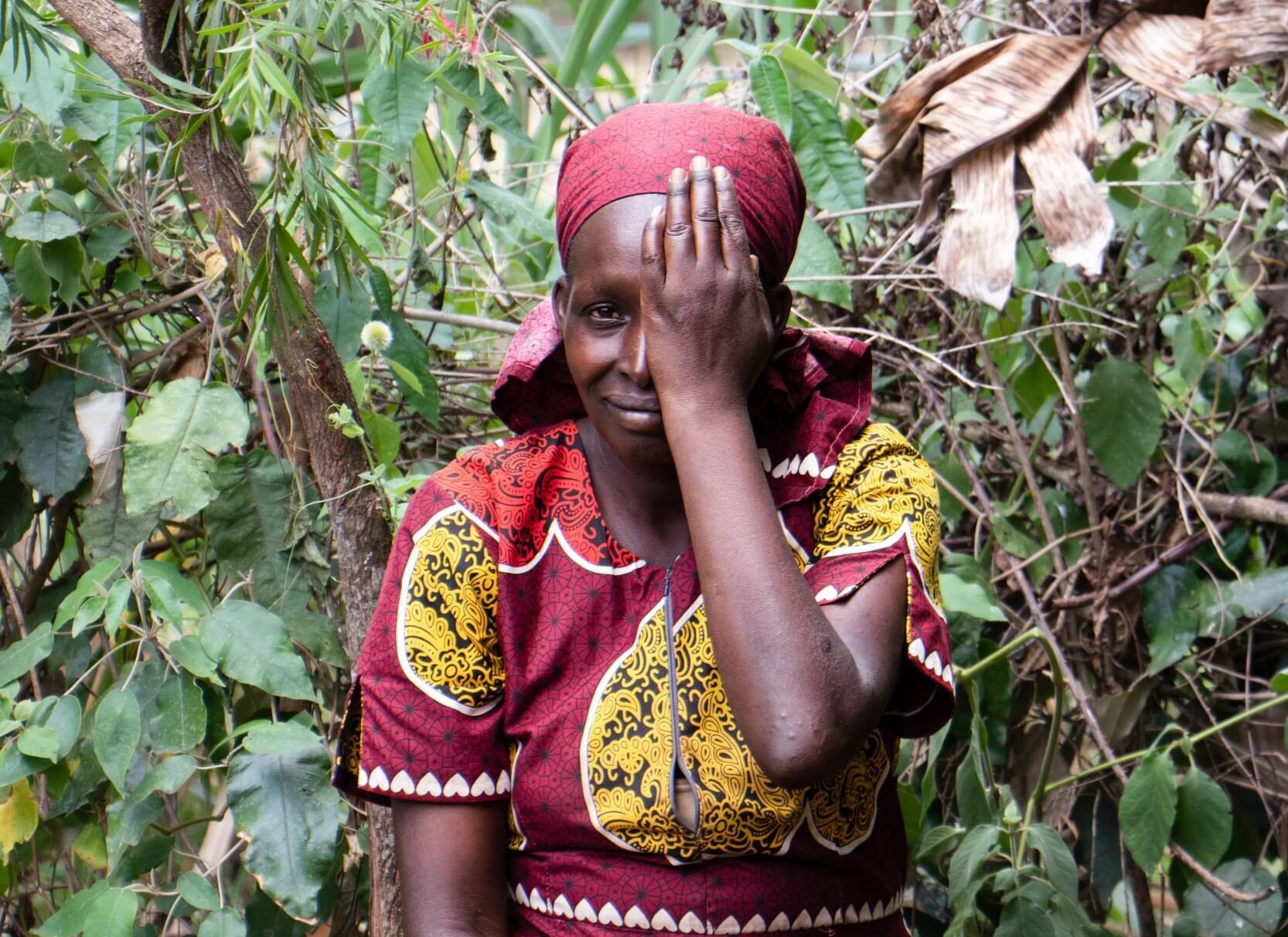Sightsavers is working with Peek Vision on a new pilot programme to improve eye health and ensure robust, continued care for people with visual impairments. Peek’s software and data intelligence platform will be used in Kenya as part of Sightsavers’ work with social enterprises to provide vision screening, refractive error services and glasses to the people who need them.

Peek’s clinically validated app, which allows anyone to accurately conduct vision screening using a smartphone or tablet. Credit: Rolex/Joan Bardeletti
The Peek app and data platform follows the patient journey from screening to treatment and can help to identify where patients are being left behind.
Sumrana Yasmin, Sightsavers’ Deputy Technical Director for eye health, said: “At Sightsavers we are keen to innovate our approaches to reach more people, and our Eye Health and Refractive Error strategies also focus on testing tech-based solutions for vision screening, diagnostics, and data management. We are excited to work with Peek to use technology to reach the most vulnerable population groups, improve access, ensure the continuum of care and leave no one behind.
“We anticipate that the adoption of Peek technology will lead to improved health system performance by using mobile devices with health workers and the existing health infrastructure to identify, refer and treat patients, support clinical decisions, and provide services more efficiently. Peek’s technology will allow us to identify where patients are not getting follow-up services, and that will help us to address any barriers that communities might be facing.
“I’m particularly excited about the fact that the use of Peek will help us further ensure that women, girls and people with disabilities in this project area, have access to high quality and timely eye care. We know that access to eye care creates a positive ripple effect for individuals, families, and communities, allowing children to learn and adults to earn, as well as improving overall wellbeing.”
Sightsavers is a leading global NGO working to eliminate avoidable blindness and promote equality for people with disabilities.
Farhana Rehman-Furs, Peek’s Head of Global Programme Partnerships, said: “This is a fantastic opportunity to see how Peek’s technology and data insights can complement Sightsavers’ eye health programme expertise. We hope to learn a lot from the initial pilot in Kenya, and both organisations see potential in expanding our partnership to other countries in the future.”
Peek’s platform is used by governments, NGOs and eye hospitals across multiple countries in Africa and Asia. Peek technology is well established in Kenya. CBM and the Ministry of Health are leading the Vision Impact Project, working with implementing partners to use Peek across seven counties. Operation Eyesight Universal is using Peek in a community eye health programme in Kisii County, while The Fred Hollows Foundation recently launched a Peek-powered community eye health programme in West Pokot County.
We are excited to work with Peek to use technology to reach the most vulnerable population groups, improve access, ensure the continuum of care and leave no one behind. ”
Sumrana Yasmin
Sightsavers’ Deputy Technical Director for eye health

Peek partners with The Fred Hollows Foundation to launch new eye health programme in Kenya
Leading global NGO The Fred Hollows Foundation has launched a new community eye health program in West Pokot County, Kenya, powered by Peek Vision’s innovative software and data intelligence platform.
Read more